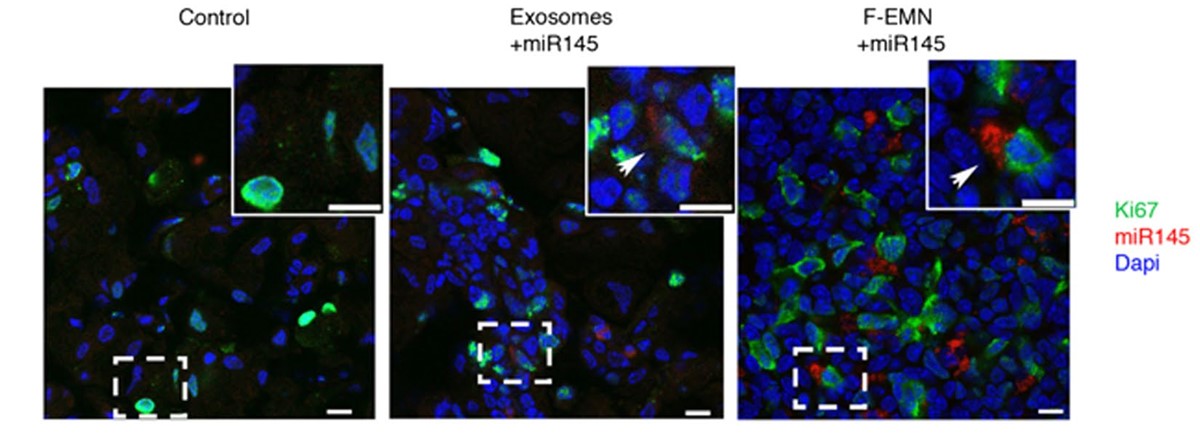Creative LipidSync Exosome Drug Delivery System Development Service
Creative Biolabs provides an innovative LipidSync exosomes drug delivery system development service to provide superior and revolutionary solutions for biotherapeutic and pharmaceutical applications. We specialize in various delivery formats such as small molecules, peptides/proteins and nucleic acids.
LipidSync Exosomes Drug Delivery Platform
We excel in the development of targeted and efficient LipidSync exosomes for drug delivery that emulate the natural and unique characteristics of exosomes. These LipidSync exosomes can encapsulate diverse therapeutic modalities including small molecules, peptides/proteins, and nucleic acids. They are designed to enhance drug delivery through the effective evasion of the immune system, superior cellular uptake, and efficient intracellular drug release. With this technology, we ensure controlled and improved pharmacokinetics and biodistribution of therapeutics to target tissues.
Sustained-Release Technology Development
LipidSync Exosomes drugs are a type of pharmaceutical product where the active drug is encapsulated within a bilayer of phospholipids. This structure allows for a high degree of control over the release of the drug, making it possible to regulate its absorption, distribution, metabolism, and excretion. Our advanced LipidSync exosomes sustained-release technology development service aims to reduce the frequency of drug administration and maintain constant drug levels in the body, improving patient compliance and therapeutic effectiveness.
-
Through the manipulation of the LipidSync exosomes itself. By adjusting factors such as its size and lipid composition, it is possible to slow the release of the drug, maintaining a steady concentration in the bloodstream over time. This can be achieved either through passive mechanisms (e.g., making the LipidSync exosomes more stable, or 'rigid') or active mechanisms (e.g., introducing chemical triggers, which cause the drug to be released when certain conditions are met).
-
Coated with a biocompatible and biodegradable polymer, such as polyethylene glycol, that prevents LipidSync exosomes from being recognized and cleared by the body's immune system.
-
Use of stimuli-responsive LipidSync exosomes, which can respond to changes in the environment like pH, temperature, or certain enzymes, thus releasing the drug at a specific target site.
LipidSync Exosomes Encapsulation Efficiency Measurement
-
HPLC Assay. HPLC is a commonly used method. The samples are sorted out at high pressure and, depending on the retention time, the amount of drug encapsulated can be determined.
-
UV-visible Spectroscopy. The samples are placed in a UV-vis spectrophotometer, and the light absorbed is recorded. The quantity of light absorbed can be correlated to the concentration of the drug encapsulated.
-
Flow Cytometry. LipidSync exosomes and the drug are stained with fluorescence markers and then separated using the flow cytometry machine. The quantity of fluorescence from the LipidSync exosomes can be correlated with the encapsulation efficiency.
-
Dialysis. The solution of LipidSync exosomes entrapping the drug is placed inside a dialysis bag which is then immersed into a buffer solution. The drug that is not encapsulated diffuses out into the buffer solution. After a certain time, the LipidSync exosomes are collected from the dialysis bag and the quantity of the drug is determined.
-
Mass Spectrometry. This is a very sensitive method that works by ionizing the drug and sorting the ions based on their mass-to-charge ratio. The intensities of the sorted ions can then be used to work out the concentration of the drug in the LipidSync exosomes.
-
Nuclear Magnetic Resonance. This technique determines the physical and chemical characteristics of the medication enclosed by using the magnetic properties of specific atomic nuclei.
 Fig. 1 Confocal microscopy images of naive exosomes and exosome-mimicking nanovesicles (EMN) delivering miRNAs to lung tumors.1
Fig. 1 Confocal microscopy images of naive exosomes and exosome-mimicking nanovesicles (EMN) delivering miRNAs to lung tumors.1
At Creative Biolabs' LipidSync Exosomes drug delivery system development service, we prioritize your needs. We're constantly striving to improve and update our methods and techniques according to the latest advancements in exosomal drug delivery systems. Contact us to experience an advanced and effective journey.
Reference
-
Vázquez-Ríos, Abi J., et al. "Exosome-mimetic nanoplatforms for targeted cancer drug delivery." Journal of nanobiotechnology 17 (2019): 1-15.
For Research Use Only. Cannot be used by patients.
Related Services:

 Fig. 1 Confocal microscopy images of naive exosomes and exosome-mimicking nanovesicles (EMN) delivering miRNAs to lung tumors.1
Fig. 1 Confocal microscopy images of naive exosomes and exosome-mimicking nanovesicles (EMN) delivering miRNAs to lung tumors.1









